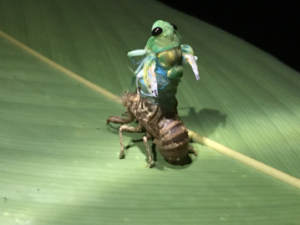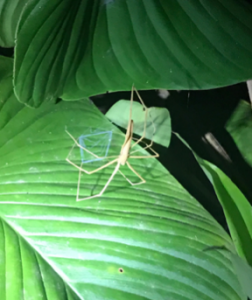Over the past week, we have had the incredible opportunity to stay at the La Selva Biological Research Station and the Veragua Research Station. While we were there, we went on several night hikes and encountered a variety of wildlife. Each of us were in awe of the creatures we got to observe with the help from the naturalist guides at each location.
During the first night hike in La Selva, we split into four separate groups, which helped to keep the noise level at a minimum. This gave us a better chance to see wildlife in their undisturbed environments. One of the neatest (and most unique) things one group was able to observe was a pair of mating sloths! Our guide initially pointed out a female
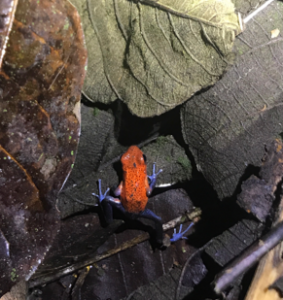
sloth sleeping in a tree when all of a sudden (but very slowly), we saw a male sloth climbing up the tree towards the female. Our guide had been at La Selva Biological Station for ten years, and he had never seen this occur. Another group was even able to get a glimpse of an ocelot on their night hike. In addition, we had the opportunity to see organisms including litter toads, blue jean frogs, and peccaries all just on the first night.We were stopping constantly to check out animals and insects that group members would find. It was only our first night and we were able to see things others had rarely, if ever, witnessed.
Although difficult to see, this is evidence of our sloth mating encounter.
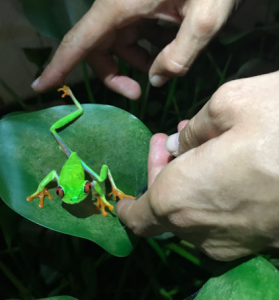 In Veragua, we went on night hikes both days that we stayed at the Research Station. While the second night hike was long, it was by far the most spectacular. We got to see many species of snakes, scorpions, crabs, and frogs. This was our most adventurous trek as we were almost up to our knees wading in streams and even had to climb over fallen trees to look for frogs! It was definitely well worth the effort, as you can see by some of the pictures we took.
In Veragua, we went on night hikes both days that we stayed at the Research Station. While the second night hike was long, it was by far the most spectacular. We got to see many species of snakes, scorpions, crabs, and frogs. This was our most adventurous trek as we were almost up to our knees wading in streams and even had to climb over fallen trees to look for frogs! It was definitely well worth the effort, as you can see by some of the pictures we took.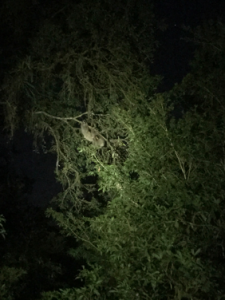
The picture above is an ogre-faced spider (Deinopidae) that we saw on our first night hike in veragua. We all found this insect to be incredibly fascinating since its web is so distinctively rectangular. The spider holds the web with its front legs and will stretch it as it propels itself onto prey to entangle it inside the web. If only we had been able to see that!
One thing that really impressed everyone was the knowledge that each of the guides had. They were complete experts and could name a frog based strictly on its call, could spot shining eyes in the water, and point to different animals we would have never seen on our own. They also had a lot of knowledge about the local communities, which was really helpful to learn about. They impressed us throughout our trip and helped each student see some truly incredible organisms.


